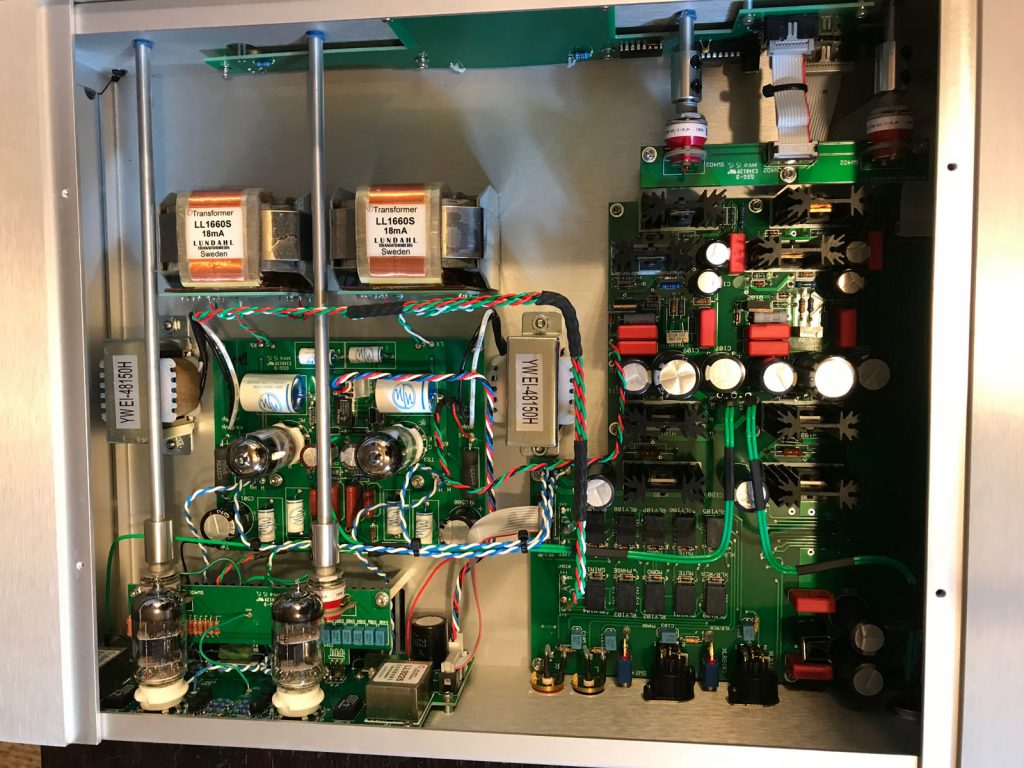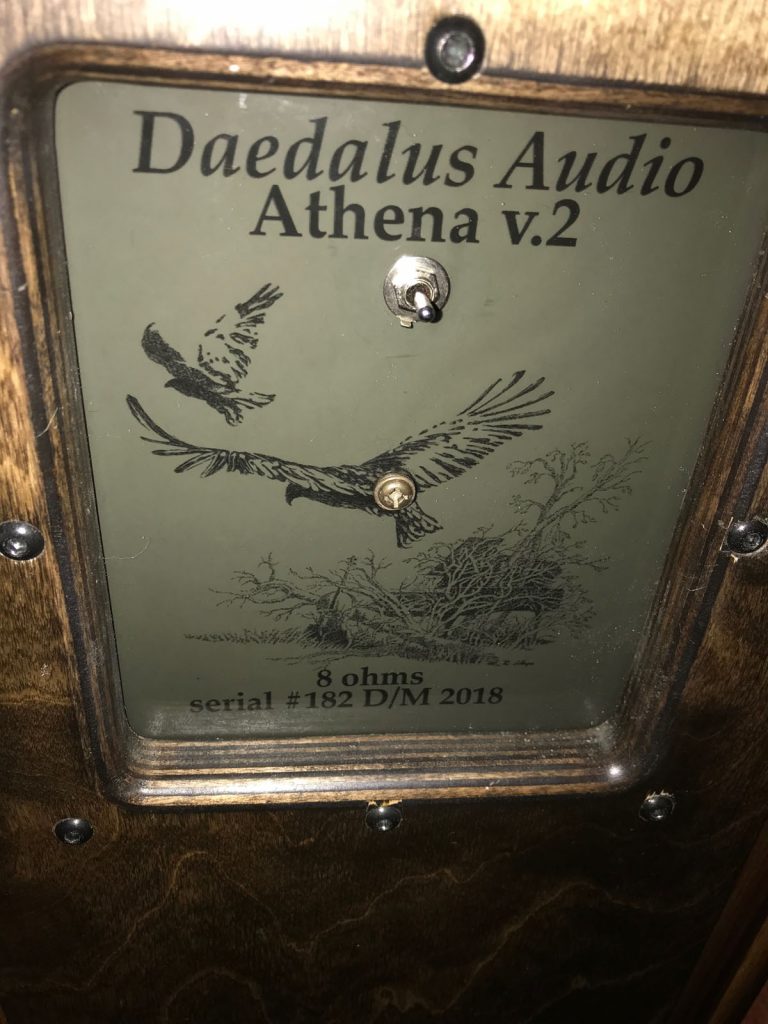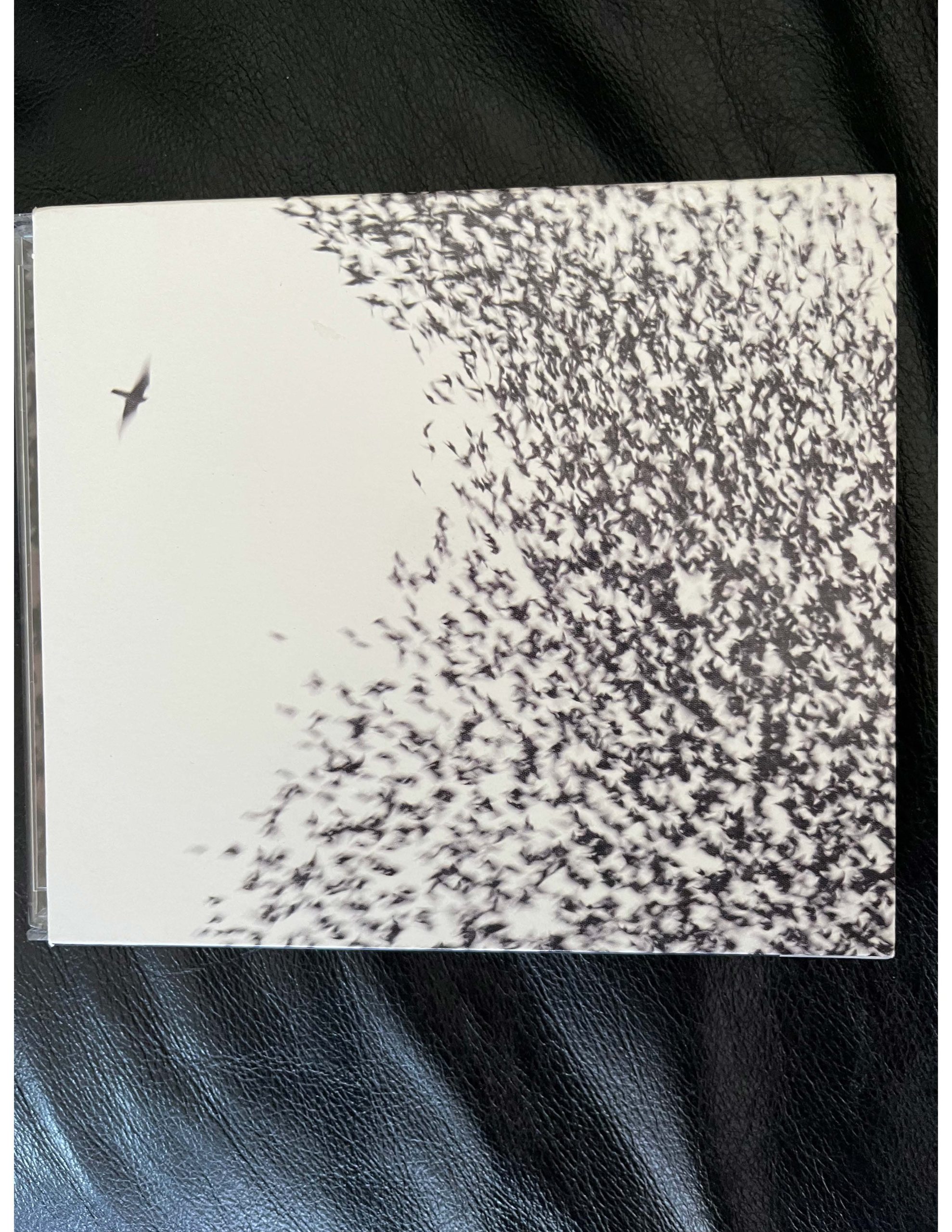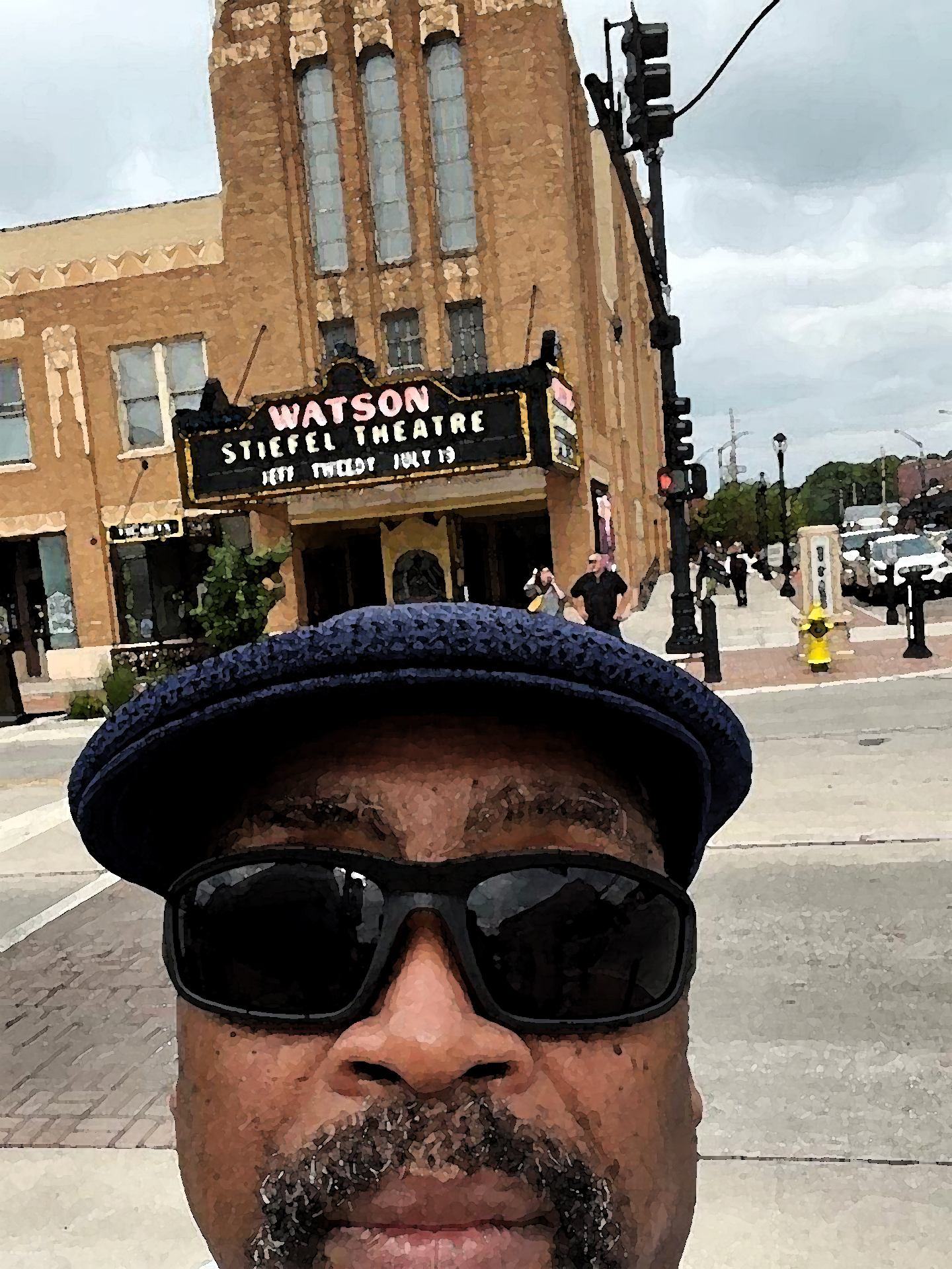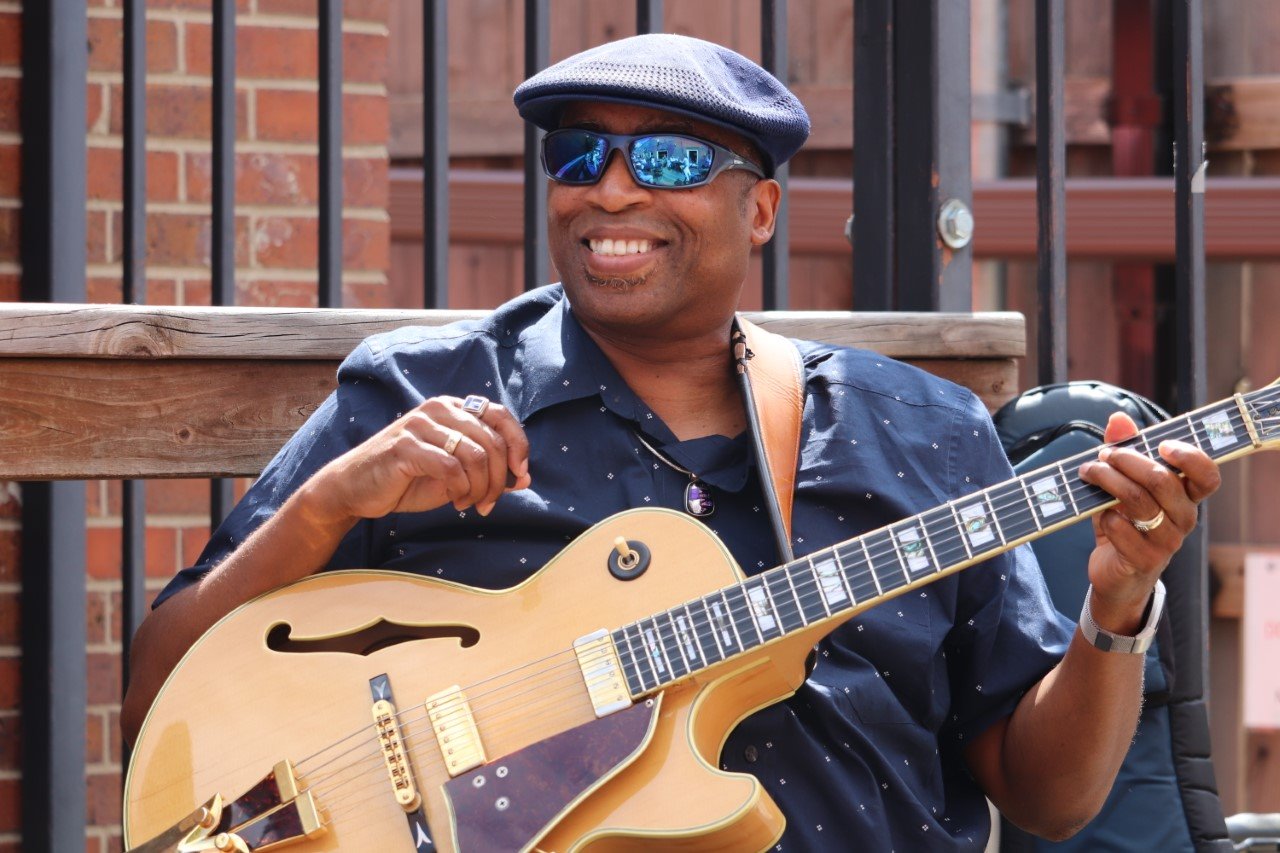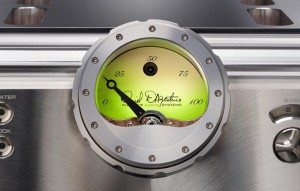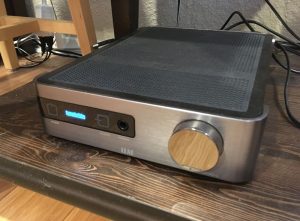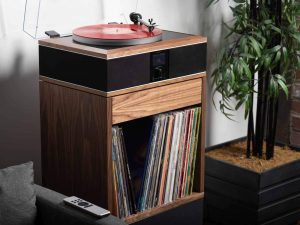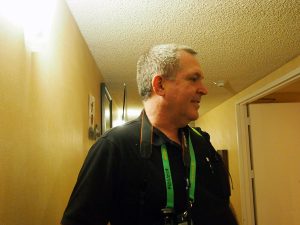Let's change up the mood, while we wait for Lenny to show up—how about a bit of Amy Winehouse as an appetizer? I have a fresh copy of the Frank double album (again, only 180-grams will do!).
I put on side 3, set the volume at '40' and played all three tracks—"Take The Box" has organ and piano and bass behind her beautiful, up-front voice (the staging and spatial separation is sonically impressive). I heard a skanky little guitar part that I didn't know existed, as well as some synth string parts that I wasn't previously privy to. There's something about hearing all this in the open as opposed to the closed headphone sounds I fall routinely sleep to at night.
The punchy, and deliberately dry drum mix of the next track, "October Song," is impressive, but what I really dug was the third track, "What Is It About Men"—the funky slow wah-wah, the medium-drip of the hip-hop drum groove. I didn't know that she had about two or three background melodies imitating the main vocal path. The bass line has that thick, syrupy bass line that is as fat as a Jamaican joint. She scat-sings a bit at the end. No need to worry about thin grooves tracks near the end—the fact that they spread the fourteen tunes over four sides meant that this particular side ended only halfway across the platter's width. Talk about plenty of real estate!
So one of my favorite tunes of hers—"Amy, Amy, Amy"— sounds so much like a Tom Waits tune with the nasal trumpet, and that wobbling alternating two-beat bass line and the clop-clop percussion groove feels straight out of either Tom's Swordfishtombones or Raindogs. Winehouse's vocals are crystal clear, and again it reminds me of how this setup really does a great job of separating timbres—Amy's tonal range shifts from round and dark to nasal and even edgier and brighter as she moves higher in the melodic range. But wow!—there is a major surprise—the song "Brother" has deliberate crackles and pops in the track, a conscientious retro sound that had become popular in the mid-90s by R&B artists who realized that hearing crackles and pops was a pretty hip thing to emulate. (They weren't old enough to actually have hard-earned, genuine crackles and pops, so they just sampled them and dialed them in! I noticed it also on Erykah Badu's tune "Green Eyes.")
And another thing about that—I always did like the old crackles—it reminds me that it is real vinyl. Kinda like eating the hot melted cheese that stuck to the wrapper of your favorite cheeseburger—it's the dirty fun of it.
The best part about this track though is how the various sounds are scattered across the two speakers—a scratch turntable effect on the left, a tringle and talking drum thud on the beat for you in the left speaker; a straight-sixteenth-note hi-hat pattern that makes the whole tune swing she adds two-part harmony part on the chorus (one centered dead left, the other somewhere near the center but below the main voice) to make it a three-way. There's a stuttering stubby-muted guitar riff outlining the chords, and yet another reverbed and tremoloed guitar swinging back and forth between both speakers. Someone is finger-popping in the right speaker—this is the best part of hip hop, and this system is grabbing it all without breaking a sweat.
An interesting thing just happened. I put the last disc on, and because it was brand new, the LP fit quite tight over the spindle, and I forgot to put the clamp on, and as soon as I went back across the room, I saw the wobble from the album, and the bobbing of the tonearm. I went back over to the table and clamped it down. I noticed immediately that the clamp made the colors much louder and brighter. I also knew this tune featured a low sub-tone growl note pitched to note D, that lands on the "and" of second beat in every other measure—I wanted to see how the system handled it—and it was quite present and prominent. I'm a believer. The clamp works.
This pairing of VPI, LTA and PH150 seems like they were born together, and I am gradually less and less intimidated by it all; in fact, I am seriously falling for the sound—and even when I look across the room at the components, they seem to all smile at me in silent confidence, as if to say, "We are the rock of Gibraltar that can handle anything—we are the sturdy, immovable force that moves you."
My colleague Steve said of the schematic layout of the ModWright, "Clean layout is important in low level amplification stages—the designer needs to control the parasitic paths within the amplifier—there are resistors, capacitors, and inductors—and the wiring that connects the various components. There is no pure resistor, capacitor and inductor that can be made; each of those components are actually a combination of resistor, capacitor and inductor… they really got this right…"
When my guitar tech heard Steve and I downstairs and saw us staring at the PH150 with the lid off, his initial response as he descended the steps toward us was, "So what are we lookin' at—is it the typical clusterfuck?" Then as he approached the table and peered inside, his immediate response was just, "…Oh!" For me, that said it all—cuz Rick is never speechless.
What's it all about, Al Green?
'So down and down and down and down, and down and down we go; hurry my darling we mustn't be late… for the show…'
That was Hendrix speaking truth to power. To the power of soul, anything is possible…with the power of you…anything that u wanna do…and what I wanna do is tell u how much I am in love right now with this ridiculous equipment I have in my basement. It is indeed some scary stuff. And I mean that in the best way—this sound rising from my lower floor is spooky good. And I have one person to thank for that—David Robinson—Ye Olde Editor himself, plus his associated unindicted co-conspirators who supplied the components to this new mind-blowing audio system. He hooked me up with some of the finest sounding rigs in the world—after much deliberation, he hand-picked the components personally and had his friend build the speakers custom built just for me (hot-damn!), and dragged me kicking and screaming higher into the stratosphere where the air is deliberately thin—it's rare space where the average don't get to dwell. I now have a much better idea why he sorta chuckled when I told him about the rudimentary stereo pieces I had when I first started trying to write for this magazine—little did I know, he had already started hatching his diabolical schemes for me.
Since then I have slowly and carefully stepped up my personal game—my track record and progress is readily available and easy to chart, since it's been less than a year since I have wandered into the shark tank of high-end audio and entries I have submitted articles for several issues of PF. I basically started with no equipment and even less than no information about how to evaluate, interpret, analyze, set up, compare, review and afford this level of audio equipment. It's baby steps for sure, but I'm enjoying the ride. You would, too, if you had the kinda big-boy toys I now have in my basement, courtesy of a set of nice gangsters who have lent me a few specific brands to combine and review. What still amazes me is that David has such faith in me and that he trusts my ears as a professional musician, composer, university professor, record label owner/producer, and author that he values my opinion and insight regarding so many styles of music that I have spent my entire life bathing in.
The reason why I'm bringing all this up is that I really appreciate the fact that he doesn't expect or ask me to do the kind of in-depth, tech-savvy reviews and writing style that my good friend Michael Fremer does—Michael is literally in a class by himself (and who doesn't already know that?) No, I'm not even in a class of my newest audio reviewing friend/mentor from PF, Tom Gibbs, who has the sweetest blend of been-there-done-that mixed with southern charm that's so inviting to a newbie like me, whose learning curve is admittedly steep but leveling out ever-so-slightly each time I take a step forward, even if my arms are protruded straight out in front of me and it's pitch black and my heart's pumping fast with fear of unknown literary terms when trying to describe audio equipment, tech specs, sonic sensations, etc.
But here's the deal—you can't learn about this shit without jumpin' in a few times with both feet. I'm not saying that you have to buy everything you get exposed to, but it's kinda like instantly falling in love with any beautiful woman you see within the first ten seconds—it's an immediate rush, and there's no harm in looking—just don't stare too long—you might get pulled into something that leads to some other stuff you might not be ready for. But even scarier is the fact that being scared can paralyze you. That's why I'm speaking out loud about what a rocket ride this is. I'm blessed to have this opportunity to play with toys like these, even if I can only rely on my natural reaction and instinct to pure sound. Maybe there doesn't need to be more than a few Michaels in the world, but thank God we have at least one. The good news is I can happily be on the other end of the ten-thousand-mile long seesaw, balancing Mike's consistently unprecedented analyses and stunning sonic descriptors with my simple-Simon statements that always seem to just boil down to whatever happens between my ears—those things that lead me to unrepentantly exclaim, "damn, that shit's poppin!"
Having said that, I'm currently willing to announce that, if I have anything to do with it, I am willing to have certain parts of this rig as my official "go-to" move—my basecamp reference components for the next however-many issues and articles I can crank out in the next installments of the foreseeable future…yeah, I'm that happy with it. I have always had a healthy respect for consistency (control factor) as the prime factor in establishing a strong sense of variety (how's that for an oxymoron?) in the variable elements (cartridges, turntables, tonearms, etc.). For the time being, I don't wanna let go of this PH150 and, (through guilt by association, its power supply), nor do I wanna release either of the LTA components—who's gonna kick a zero-hysteresis output transformerless audio out of the room? No one, I dare say! And, oh what the hell—while I'm at it, why not keep the Athenas—after all, weren't they made just for me?
Last but not least, I cannot deny that underneath and through it all, the stunningly quiet setup must be attributed in large part to those industrial strength snakes from WyWires—I cannot give them up—why mess with perfection?
That leaves the VPI—and here is where the real interchangeability begins. Why not fool around? I wanna be a VPI VIP! Let's gamble with the Gimbal! Gimme more intense training in studying the art of Ortofonithology! While we're at it, let's fool around with Hana—and her sisters!
Until next time, keep on swingin'!
Prices and availability: Please contact the sources listed below for current pricing and product availability.
Manufacturers participating in Dr. Wayne’s project (alphabetically, by company):
Acoustic Sounds/Analogue Productions Chad Kassem and company
USA Order Phone: 1-888-926-2564
Rest of the World Order Phone, or non-order calls: 785-825-8609
http://store.acousticsounds.com
Daedalus Audio, Lou Hinkley
7060 Portal Way #120
Ferndale, WA 98248
360.312.3604
Linear Tube Audio, Mark Schneider and company
7316 Carroll Avenue
Takoma Park, MD 20912
301.448.1534
ModWright Instruments, Dan Wright
21919 NE 399th Street
Amboy, WA 98601
360.247.6688
VPI Industries, Mat Weisfeld
77 Cliffwood Avenue, #5D
Cliffwood, NJ 07721
732.583.6895
Alex Svetinsky
WyWires
16501 Sherman Way, Suite 120
Van Nuys, CA 91406
818.981.4706
Photographs courtesy of Dr. Wayne Goins, except portrait of Wayne Goins, by David W. Robinson







